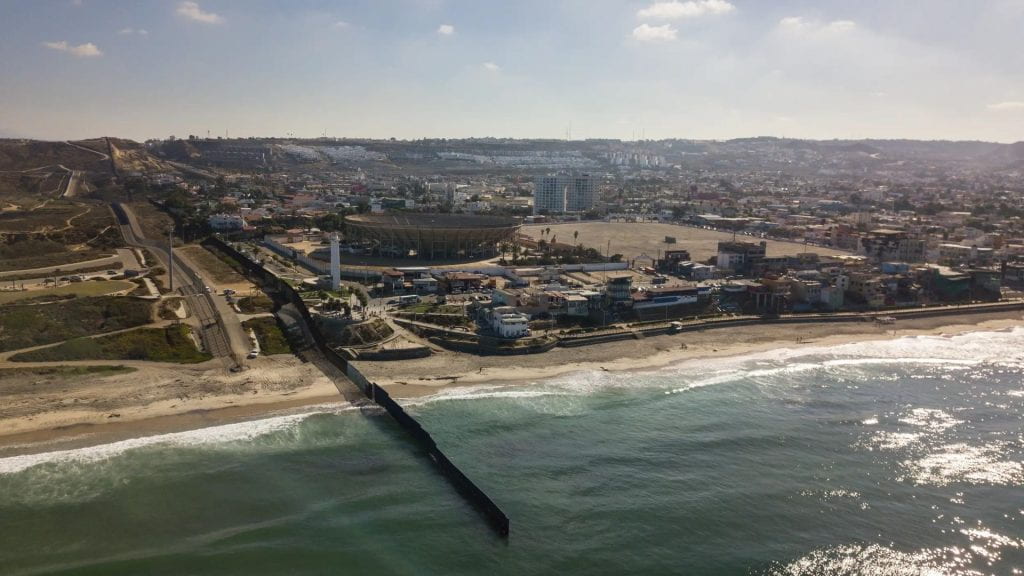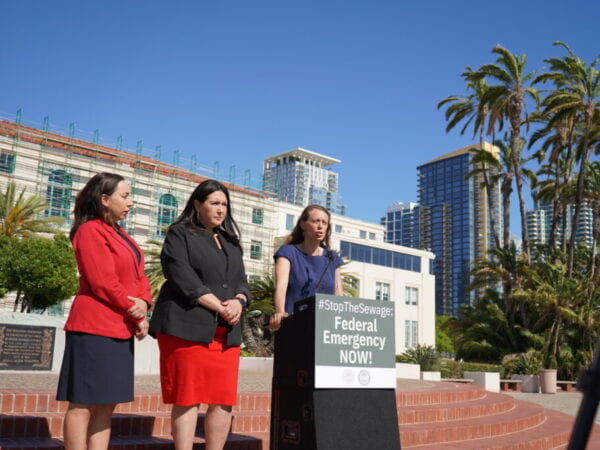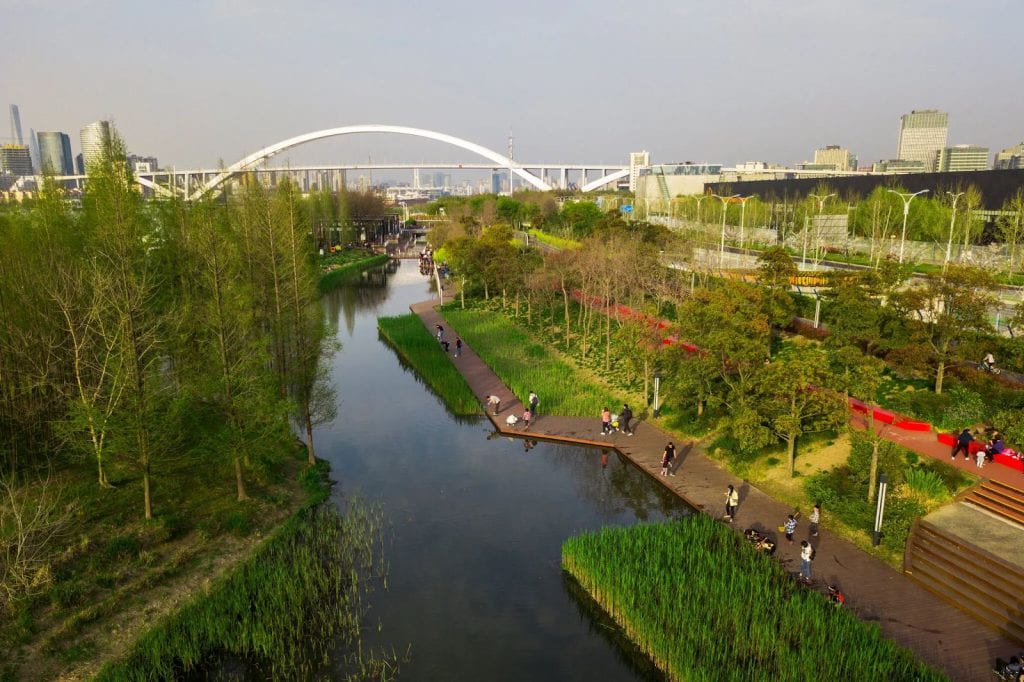The Border Crisis Nobody is Talking About: Declaring Pollution in the Tijuana River Valley as a National Emergency
A binational environmental disaster is occuring at the United States-Mexico border between San Diego and Tijuana, and the elected and public officials representing these areas are scrambling to address the issue. The Tijuana River Watershed has been highly polluted for decades thanks to a variety of symptoms of unsustainable development, including urban sprawl, lack of waste/stormwater infrastructure, and rapid housing development. Sediment runoff, solid waste, and pollutants that enter the Pacific Ocean through the river’s output degrade coastal water, ecosystems, and public health on both sides of the border (Fernandez 2005). For context, most of the pollutants enter the watershed on the Mexican side of the border, but numerous international variables and climate change exacerbate the problem, making Tijuana and San Diego partners in solving this issue together. For decades, the coastal communities of South San Diego County have been advocating for this issue to be addressed. In fact, Imperial Beach, the city closest to the pollution source, has had their beach closed for over 800 days as a result of inaction at the dangerous pollutants entering the environment a few miles south (Riviera 2024). This issue has persisted for decades, which means policy to address this issue has also fallen short for decades. San Diego communities are advocating for Governor Newsom and President Biden to declare a State of Emergency to bring urgency and funding together to solve the issue. Lack of action on this environmental disaster is complicated by the communities that are most directly affected by the pollution, which are mostly low-income communities of color.
This blog post will give an overview of the binational issue related to pollution, responsibility, environmental justice and the commons, and highlight the political and grassroots efforts aimed at addressing the problem.

The US/MX border meeting at the Pacific Ocean (MexicoNow)
The Stakeholders in the Sewage Crisis
The involved parties in the fight to #StopTheSewage could not be more vast. In terms of ecological effects, marine life along the Pacific coast and wetland habitats and creatures are at risk from the harmful pollution. Local beaches have been deemed unsafe for humans to swim in, but what about the animals who live there? Because of the adverse effects of the pollution on human health, ecological health has been put on the backburner. However, several NGOs have taken on the advocacy role to bring this issue to the national stage. The Surfrider Foundation’s San Diego Chapter is one of these organizations fighting for recognition and tracking water quality related illness, but they are joined by dozens of other community groups and cross-border collaborations (Rivera 2023). San Diego is also home to the world-renowned Scripps Institute of Oceanography which has played a major role in tracking pollution. Even the Border Patrol and the Navy Seals have gotten involved as both institutions operate training centers close to the pollution source and have noticed agents and trainees experiencing adverse health effects, like the contraction of flesh-eating bacteria (Rios 2023). Finally, you know that the ocean and community health are important to San Diegans if all eighteen cities in the county can agree on something, in this case getting funding and national attention to address the issue– which they have. The stakeholders are numerous but the most important voices, at least on the American side of the border, are the frontline communities of South San Diego County.
This Isn’t Just Environmental Degradation, It’s Environmental Racism
An important part of this conversation revolves around who is experiencing the effects of the pollution. At this point, the issue isn’t only an environmental crisis but a public health crisis as well. The EPA found that the pollutants in this flow range from untreated wastewater, trash, and sediment and can be toxic to human health, a main reason for beach closures in the areas (epa.gov). As raw sewage enters the river valley, then the ocean, and then (through aerosols) becomes airborne, the threat of pollutants becomes virtually inescapable.
The coastal regions of South San Diego County are primarily low-income communities of color. It is not lost on the residents of Imperial Beach and National City, for example, that the people of the northern, much wealthier, and primarily white neighborhoods, like La Jolla or Del Mar would not have to deal with this problem (Rios 2023). South San Diego County beaches have been closed for years now as a result of the pollution which forces these communities to travel elsewhere to enjoy healthy coastlines. But not only is this an issue about environmental racism in regards to beach access, it also relates heavily to health as well. Community members of areas impacted by adverse health effects related to pollution do not always have the capacity to move to escape pollution, nor should they have to. This element explains the importance of governmental support at the state and national levels. Local governments are spread thin, under-resourced, and not capable of taking on an international issue as complicated as this one. They need the help and allyship of other levels of government to resolve this environmental issue to ensure the health of their communities.
The proposed emergency declaration is championed by Imperial Beach Mayor Paloma Aguirre, San Diego County Board of Supervisors Chairwoman Nora Vargas, and Vice Chair Terra Lawson-Remer. (Coronado Times)

The proposed emergency declaration is championed by Imperial Beach Mayor Paloma Aguirre, San Diego County Board of Supervisors Chairwoman Nora Vargas, and Vice Chair Terra Lawson-Remer. (Coronado Times)
The Benefits of Declaring a State of Emergency
Two cities and the county of San Diego made emergency declarations to solve this problem. An additional sixteen cities expressed their allyship to these communities in a formal letter to Governor Newsom which implored him to declare a state of emergency and to compel federal action that supports a comprehensive solution (imperialbeachca.gov). Local leaders like Imperial Beach Mayor Paloma Aguirre recognize that local power is limited power, and that these local declarations are largely symbolic or a means to gain attention from more powerful public officials (Murga 2023). However, local leaders and governments in San Diego County have used their collective voice to garner attention, and doing so through declaring states of emergencies has been, at least, semi-successful– even though Governor Newsom has so far declined his own authority to declare the sewage crisis as an emergency (Elmer 2023). It’s also understood that this issue is international and not one that local governments can reasonably tackle on their own. The local governments of San Diego County have used their collective power to increase the scale of their own policies in an attempt to address a crisis that they know requires intervention from higher levels of government.
When the San Diego County Board of District Supervisors declared the pollution and sewage flowing across the U.S.-Mexico border to be a state of emergency in June of 2023, they set up a scope of parameters to accompany the declaration. Some requests included the suspension of governmental red tape to expedite access to federal resources, a review of economic impacts from the issue, and the pursuit of financial resources (KPBS 2023). Although a declaration of a state of emergency (in this case) does not function in the same way as other policies, in terms of defining responsibilities and implementing regulations, this declaration was designed to have a fluid scope and to cut through messy government bureaucracy that may result in wasted time and money.
What’s Next?
Although I believe that the declarations of emergencies made by local governments in San Diego County played an important role in communicating the severity of the Tijuana River sewage crisis, it’s time for more action at the state and national level to bring the proper funding and resources to address this problem. I recommend that Governor Newsom finally declares a state of emergency and makes an appeal to President Biden and Congress to pay attention and direct federal dollars to this cause. San Diego has shown their commitment to solving this problem, now it’s time for the state and federal government to show up too.
Works Cited
Fernandez, L. (2005), Coastal watershed management across an international border in the Tijuana River watershed, Water Resour. Res., 41, W05003, doi:10.1029/2004WR003209.
Fox 5 San Diego. “New report finds Tijuana River contamination a public health crisis.” Fox 5 San Diego, 2024, https://fox5sandiego.com/news/local-news/new-report-finds-tijuana-river-contamination-a-public-health-crisis/.
Fox 5 San Diego. “Sewage in Tijuana River Valley Is the Worst It’s Ever Been.” Fox 5 San Diego, 2024, https://fox5sandiego.com/news/border-report/sewage-in-tijuana-river-valley-is-the-worst-its-ever-been/?ipid=promo-link-block2.
Guerrero, Adriana. “What Would Declaring the Sewage an Emergency Do?” The San Diego Union-Tribune, 17 Sept. 2023, https://www.sandiegouniontribune.com/news/environment/story/2023-09-17/what-would-declaring-the-sewage-an-emergency-do.
Keatts, Andrew. “Newsom Won’t Explain Why Tijuana River Isn’t an Emergency.” Voice of San Diego, 19 Sept. 2023, https://voiceofsandiego.org/2023/09/19/newsom-wont-explain-why-tijuana-river-isnt-an-emergency/.
Kitt, Megan. “For the First Time, TIjuana Sewage Crisis May Be Declared an Emergency.” The Coronado Times, June 2023, https://coronadotimes.com/news/2023/06/21/for-the-first-time-tijuana-sewage-crisis-may-be-declared-an-emergency/
KPBS Staff. “Supervisors OK emergency declaration on cross-border pollution.” KPBS, 27 June 2023, https://www.kpbs.org/news/local/2023/06/27/supervisors-ok-emergency-declaration-on-cross-border-pollution.
KSWB. “California group seeks disaster declaration for Tijuana River Valley sewage crisis.” Border Report, 2024, https://www.borderreport.com/news/environment/california-group-seeks-disaster-declaration-for-tijuana-river-valley-sewage-crisis/.
MexicoNow. “US $300 MM from USMCA to Clean-up Tijuana River Valley.” May 2020, https://mexico-now.com/us300-mm-from-usmca-to-clean-up-tijuana-river-valley/
Tunnell, Wesley. “Tijuana River sewage crisis is San Diego’s responsibility, too.” CalMatters, 4 Nov. 2023, https://calmatters.org/commentary/2023/11/san-diego-tijuana-river-sewage/.
U.S. Environmental Protection Agency. “Tijuana River Valley: Overview and Final Report.” EPA, April 2021, https://www.epa.gov/sites/default/files/2021-04/documents/tijuana_valley-overview-final.pdf


